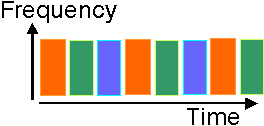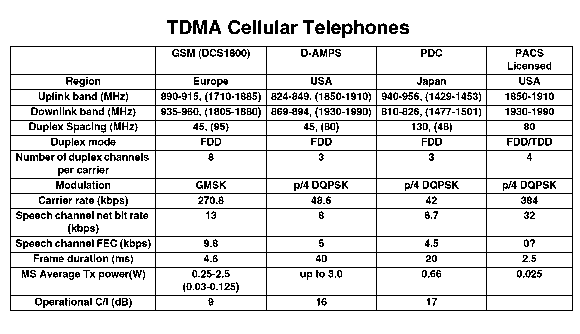
 |
JPL's Wireless Communication Reference WebsiteChapter: Cellular Telephone Networks
|
The transmit bandwidth is N times the bandwidth that would be needed to accommodate a single user. Thus the receiver can be built with broader filters, which are less expensive and smaller than those required for FDMA operation. Mostly, TDMA is combined with Time Division Duplex (TDD), in which transmission and reception do not occur simultaneously, but during different slots. This obviates the need for costly duplex filters. In a downlink (base to mobile), TDMA is simple to implement: it is just a matter of multiplexing N user signals. In the uplink (mobile to base), TDMA is more difficult: the signals from all users have to be aligned in time. Often this is achieved through a feedback loop with timing information. Relatively fast power-up and power-off times are needed to avoid that signals from users interfere with signals in other slots.

Figure: Time and bandwidth occupancy of three user signals
in TDMA system. Each user has its own time slot.
TDMA is used in many modern cellular phone systems, e.g.
DECT uses 10 carriers (FDMA) each with frames of 12 slots (TDMA)
